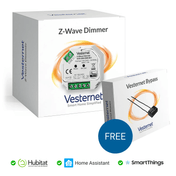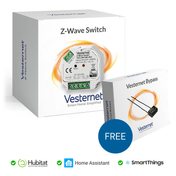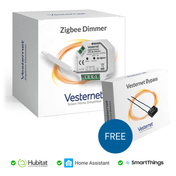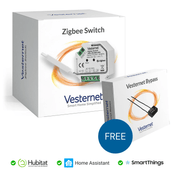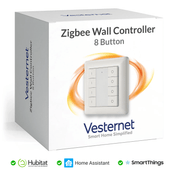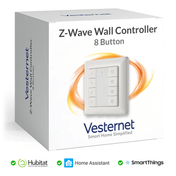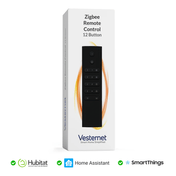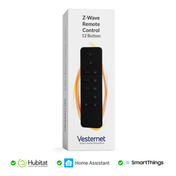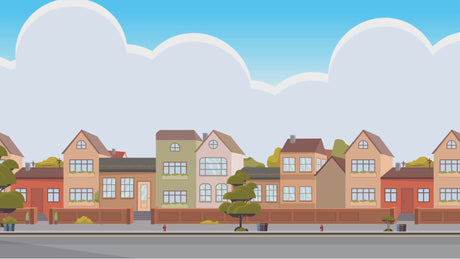In an increasingly connected world, smart home security systems have evolved from simple alarm setups to comprehensive networks of intelligent devices that work together to protect your property, possessions, and loved ones. This guide explores the essential components of an effective smart home security system, how to set them up correctly, and best practices for maintaining optimal protection.
Understanding Smart Home Security Fundamentals
Smart home security combines traditional security principles with modern connectivity and automation to create systems that are more responsive, accessible, and effective than their conventional counterparts. The key advantages include:
-
Remote monitoring from anywhere via smartphone apps
-
Intelligent alerts that distinguish between routine events and genuine threats
-
Seamless integration with other smart home systems
-
Customizable automation based on specific scenarios
-
Video verification of security events
-
No long-term contracts required with many modern systems
Unlike traditional security systems that operate in isolation, smart security becomes part of your broader home ecosystem, enabling coordinated responses across multiple devices when threats are detected.
Essential Smart Home Security Components
A comprehensive smart home security system typically includes several key components, each serving specific protective functions:
1. Smart Security Cameras
Modern smart security cameras offer features that go far beyond simple video recording:
-
Motion detection with AI-powered person, package, and vehicle recognition
-
Two-way audio for remote communication with visitors or deterring intruders
-
Night vision for 24/7 monitoring capability
-
Weather resistance for outdoor installation
-
Local and cloud storage options for footage
-
Activity zones to focus monitoring on specific areas
When selecting cameras, consider placement carefully—entrances, driveways, and vulnerable access points should be prioritized. For indoor use, focus on main living areas and valuable item storage locations while respecting privacy in bedrooms and bathrooms.
2. Door and Window Sensors
These fundamental security sensors form the perimeter defense of your smart security system:
-
Entry detection alerts you immediately when doors or windows open
-
Open/closed status monitoring ensures you haven't left entry points vulnerable
-
Tamper protection in quality sensors prevents bypassing
-
Battery monitoring ensures continuous operation
For comprehensive protection, install sensors on all ground-floor doors and windows, as well as any upper-floor access points that could be reached from trees, balconies, or adjacent structures.
3. Motion Sensors
Strategic placement of motion sensors creates an additional layer of security:
-
Interior coverage detects movement when the home should be empty
-
Pet-friendly options reduce false alarms in homes with animals
-
Adjustable sensitivity to balance between security and convenience
-
Integration with lighting for security illumination when motion is detected
Position motion sensors to cover main hallways, stairwells, and rooms with valuable items. For optimal performance, avoid placing them directly facing windows or heat sources that could trigger false alarms.
4. Smart Locks
Smart locks transform your front door into an intelligent access point:
-
Keyless entry via code, app, or fingerprint eliminates lost key concerns
-
Temporary access codes for visitors, service providers, or rental guests
-
Remote locking/unlocking capabilities
-
Entry logs showing who entered and when
-
Automatic locking after a set period
-
Integration with other security components for coordinated responses
When selecting smart locks, ensure compatibility with your door type and existing smart home ecosystem. For maximum security, choose models with encryption and tamper alerts.
5. Smart Alarm Systems
Modern alarm systems connect with your other security devices to provide:
-
Loud deterrent sirens when breaches are detected
-
Silent alarm options that alert authorities without tipping off intruders
-
Multiple trigger sources from various sensors throughout your home
-
Smartphone notifications when alarms are triggered
-
False alarm prevention features
Look for systems that offer battery backup and cellular connectivity options to maintain protection during power or internet outages.
6. Video Doorbells
These specialized security cameras provide focused protection for your main entry point:
-
Visitor verification before opening the door
- Package delivery monitoring
-
Two-way communication with visitors
-
Motion-activated recording to capture activity near your door
-
Integration with smart locks for coordinated entry management
Install video doorbells at eye level for optimal face capture, and ensure they have a clear view of your doorstep to monitor package deliveries.
Setting Up Your Smart Home Security System
Creating an effective security system involves more than just installing devices. Follow these steps for optimal protection:
Step 1: Assess Your Security Needs
Begin by evaluating your specific requirements:
-
Property characteristics: Size, layout, number of entry points
-
Neighborhood factors: Crime rates, previous incidents
-
Household composition: Family size, pets, children, elderly residents
-
Valuable assets: Locations of important or irreplaceable items
-
Daily routines: When the home is typically occupied or empty
This assessment helps prioritize which components to implement first and where to place them for maximum effectiveness.
Step 2: Choose a Smart Home Controller
A reliable smart home controllers serves as the central brain of your security system:
-
Select controllers with strong security protocols and regular updates
-
Ensure compatibility with your chosen security devices
-
Consider local processing options that continue functioning during internet outages
-
Verify smartphone app quality for remote monitoring and control
-
Check integration capabilities with other smart home systems
Your controller choice will influence which specific security devices work best in your system, so make this decision early in the planning process.
Step 3: Install and Position Devices Strategically
Proper placement dramatically impacts security effectiveness:
-
Cameras: Position at entry points, covering approaches to your home
-
Door/window sensors: Install on all ground-floor access points and accessible upper-floor openings
-
Motion sensors: Place in main hallways and rooms with valuable items
-
Smart locks: Install on primary entry doors
-
Alarm components: Position sirens where they can be heard both inside and outside
Follow manufacturer guidelines for installation height, angle, and distance requirements.
For wireless devices, ensure they're within reliable range of your controller or network.
Step 4: Create Security Zones and Modes
Organize your security system into logical zones and operational modes:
-
Perimeter zone: Door/window sensors and outdoor cameras
-
Interior zone: Indoor motion sensors and cameras
-
Critical zone: Areas containing valuables or sensitive items
Then establish modes that activate appropriate combinations of these zones:
-
Away mode: All zones active for maximum security
-
Home mode: Perimeter active, interior disabled for comfortable movement inside
-
Night mode: Perimeter plus selected interior zones for sleeping hours
-
Vacation mode: Enhanced security with lighting automation to simulate occupancy
Customizing these zones and modes to your specific needs creates a system that provides protection without inconvenience.
Step 5: Configure Automations and Alerts
Smart security systems excel through intelligent automations:
-
Entry detection: Lights activate when doors open after dark
-
Motion triggers: Camera recording starts when motion is detected
-
Alarm responses: All lights turn on when alarms trigger
-
Time-based rules: Automatically arm the system at bedtime
-
Geofencing: Security mode changes based on household members' locations
For alerts, balance security awareness with notification fatigue:
-
Critical alerts: Break-ins, alarms, unexpected entry
-
Important notifications: Unrecognized visitors, unusual activity
-
Status updates: System armed/disarmed, routine events
Customize notification settings for different household members based on their preferences and responsibilities.
Enhancing Your Smart Home Security System
Beyond basic setup, consider these enhancements for comprehensive protection:
Integration with Other Smart Home Systems
Security becomes more effective when coordinated with other home systems:
-
Lighting integration: Automated lighting deters intruders and illuminates potential threats
-
Voice assistant compatibility: Control security features via voice commands
-
Entertainment system coordination: TV and audio can simulate occupancy
-
HVAC integration: Detect open windows and adjust climate control accordingly
These integrations create a cohesive system where security is woven into your home's overall intelligence.
Remote Monitoring and Management
Maximize the benefits of connected security:
-
Set up family access with appropriate permission levels
-
Create monitoring schedules for when you're away
-
Establish alert hierarchies for different family members
-
Configure vacation monitoring for extended absences
-
Consider professional monitoring services for critical situations
Remote capabilities transform passive security systems into active protection that you can manage from anywhere.
Privacy and Data Security Considerations
Smart security introduces important privacy considerations:
-
Secure your network with strong passwords and regular updates
-
Use two-factor authentication for security apps and services
-
Be mindful of camera placement to respect household privacy
-
Understand data storage policies for cloud-based services
-
Regularly review access logs to monitor system usage
A security system should never compromise your privacy—proper configuration ensures both protection and peace of mind.
Smart Home Security Best Practices
Maintain optimal protection with these ongoing practices:
Regular Maintenance
-
Test all components monthly to ensure proper operation
-
Replace batteries proactively in wireless devices
-
Clean camera lenses for optimal video quality
-
Update firmware and software when available
-
Audit your security setup quarterly to identify improvement opportunities
Security Habits
-
Consistently use security modes appropriate to your situation
- Regularly review camera footage and event logs
-
Avoid sharing security details on social media
-
Create unique access codes for different visitors
- Periodically change passwords and access credentials
Handling False Alarms
-
Identify and address common triggers like pets or moving curtains
-
Adjust sensor sensitivity to appropriate levels
-
Create allowances for routine events like deliveries
-
Establish verification procedures before contacting authorities
-
Document false alarm incidents to identify patterns
Conclusion: Building a Security-First Smart Home
A well-designed smart home security system provides more than just protection—it delivers peace of mind and forms the foundation of a truly intelligent home. By selecting quality components, configuring them thoughtfully, and maintaining good security practices, you create an environment that safeguards what matters most.
As you build your system, remember that security technology continues to evolve. Start with the essential components outlined in this guide, then expand gradually as your needs change and new capabilities become available. With each addition, your home becomes not just smarter, but safer.
















